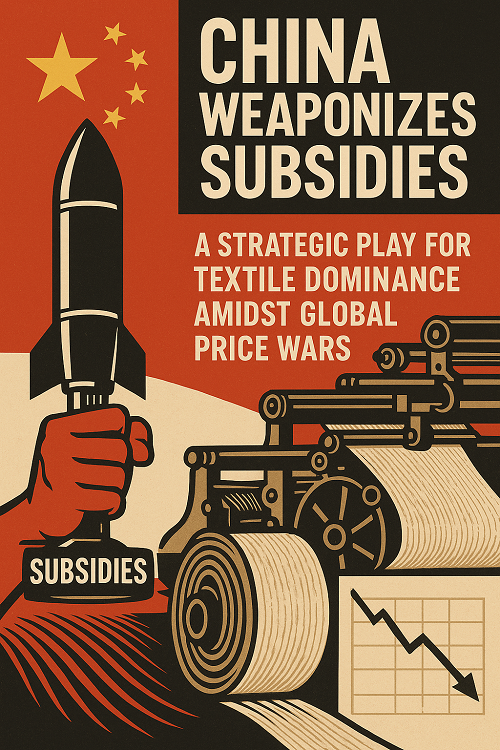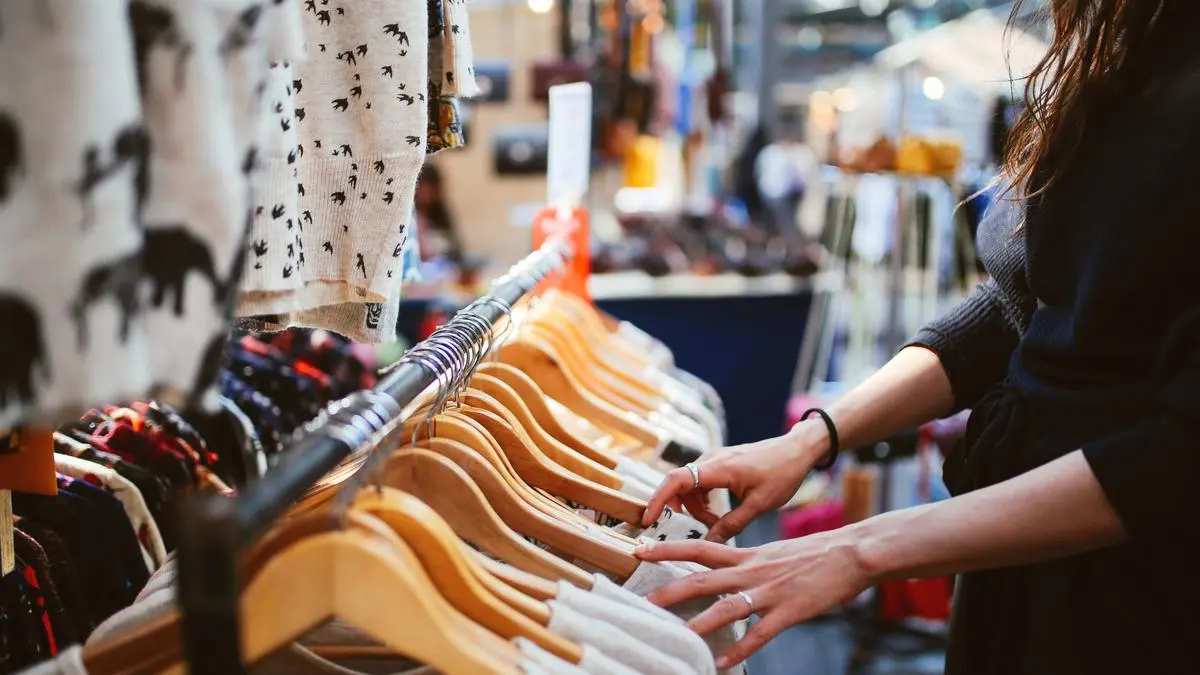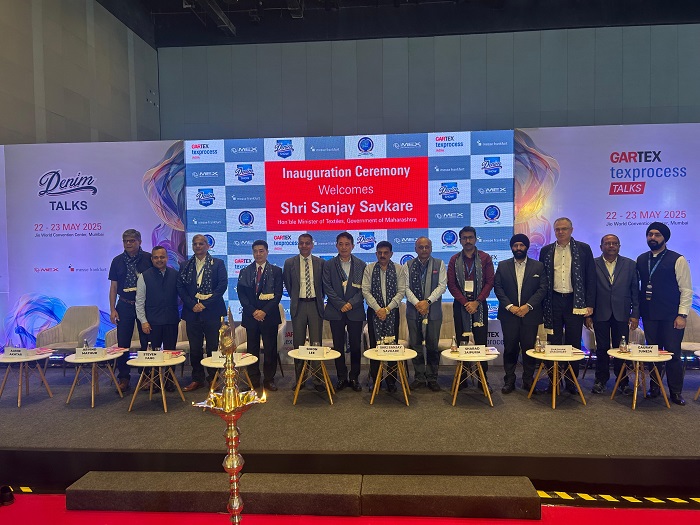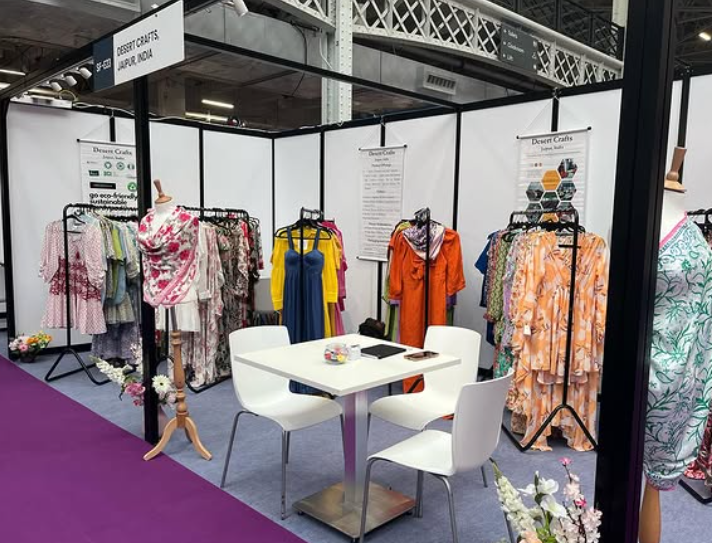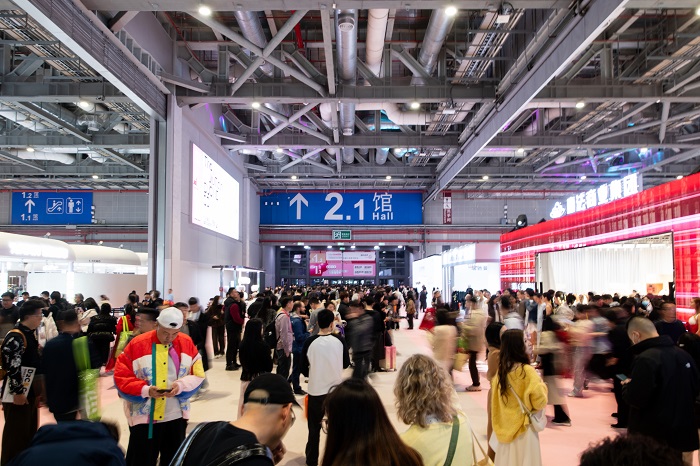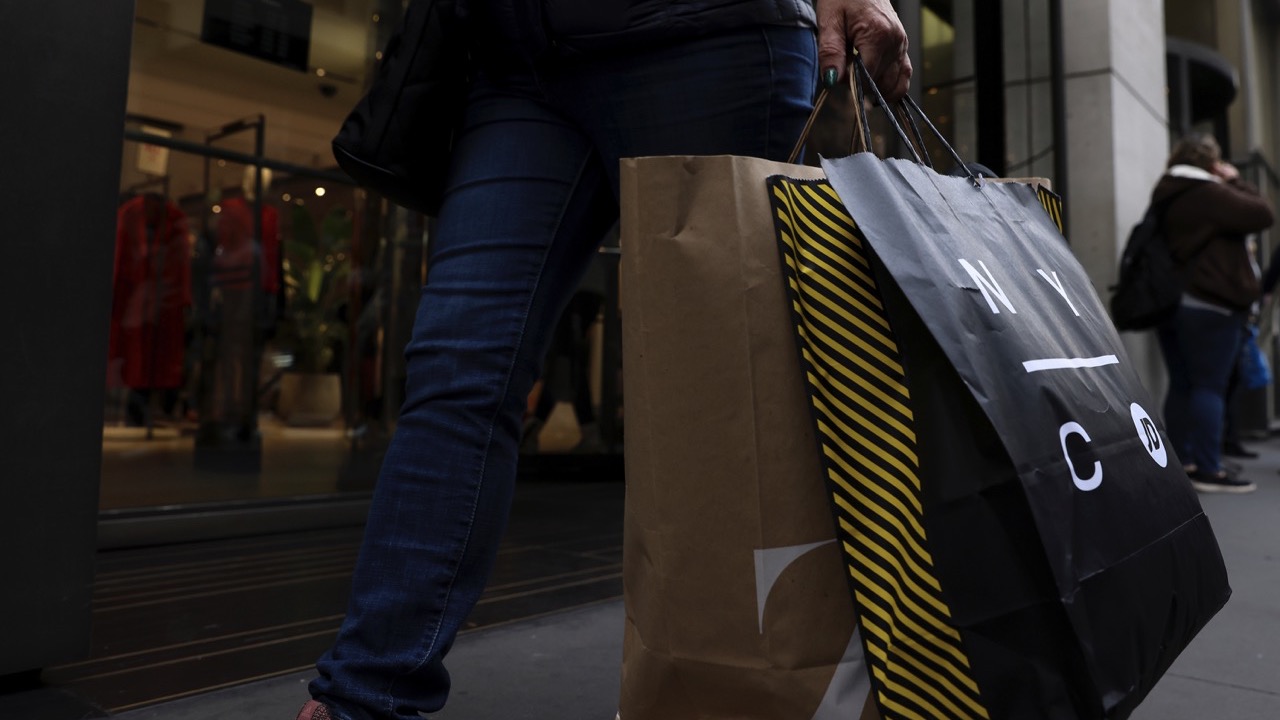The significant growth in retail sales during various shopping festivals including Black Friday, Cyber Monday, Christmas Day and Boxing Days is expected to boost the apparel sourcing from Bangladesh, says Faraque Hassan, President, BGMEA.
Bangladesh’ is expected to regain buyers’ confidence following these festive events with more buyers placing orders in the coming days.
Western consumers are also expected to resume shopping by next quarter, Hassan hopes, He urged the government to simplify business processes, control corruption in government office and implement mega projects with speed.
He also urged the government to ensure an uninterrupted supply of gas and electricity to maintain shipment datelines for exporters. Besides, he called for a policy to provide tax benefits for investing in solar energy and certain banking-related policies to ensure their capacity and strengthen backward linkages.
Denim maker Levi Strauss & Co has appointed David Marberger, Chief Financial Officer, Conagra Brands, to the company’s board of directors and also its audit committee
Also serving as the Executive Vice President for Conagra Brands, Marberger has over 30 years of experience in finance and leadership. Currently, he oversees the finance and information technology functions at Conagra Brands.
Prior to that, Marberger served as chief financial officer at Prestige Brands and also Godiva Chocolatier. He holds an MBA degree from The Wharton School, University of Pennsylvania, and a BBA. from the University of Massachusetts.
Marberger’s appointment comes just weeks after Chip Bergh, CEO, Levi's as of April 26, with Michelle Gass, currently president, slated to take over as CEO of the firm.
The Union Textile Ministry plans to promote cotton exports under the Kasturi Cotton Initiative that has so far registered 300 ginners from across the country.
With an aim to promote Indian cotton through branding, traceability and certification; the Kasturi Cotton Initiative will now target premium export segments.
Rachana Shah, Textile Secretary, states, demand for textiles is slowly picking up in the international markets and Union Finance Ministry will soon decide on the extension of loan moratorium under the Emergency Credit Line Guarantee Scheme (ECLGS).
India is ranked amongst the top 5 apparel exporting countries and plans to expand its export base via new FTAs, adds Shah. Assuring that import surges in all segments of textiles are being monitored and value chains for raw materials strengthened, Shah pointed out that Quality Control Orders are being issued in viscose, polyester and other segments to ensure quality and curb sub-standard imports.
By hosting the Bharat Tex 2024 exhibition from February 26-29, 2024, the Indian government aims to drive more investments and sourcing of raw materials in the sector. In 2023, it trained around 1.2 lakh people under the Samarth scheme, including 1.08 lakh women. National Institute of Fashion Technology (NIFT) also plans to expand India’s textile exports by signing MoUs with other nations of the world.
Footwear brand Nike’s revenues surged by 1 per cent Y-o-Y to $13.4 billion in Q2 FY2024. However, the brand’s value fell by 11 per cent to $519 million due to the declines in North America and Europe markets.
Nike’s revenues in North America dropped by 4 per cent to $5.63 billion during the quarter while revenues in EMEA surged by 2 per cent to reach $3.57 billion.
Revenues in Greater China grew by 4 per cent to $1.86 billion, while APLA also recorded a 13 per cent increase in revenues to $1.8 billion.
Nike’s gross profit for the quarter surged by 5 per cent Y-o-Y to $5.97 billion, resulting in a gross margin of 44.6 per cent. The brand’s net income grew by 9 per cent to $1.58 billion.
According to Mathew Friend, Chief Financial Officer, Nike’s second quarter financial results drive a more profitable growth for the brand as it continues to focus on gross margins expansion and efficient management of costs.
At a press conference in the country, Cao Huu Hieu, Director, Vietnam Textile and Garment Group (Vinatex) said, Vietnam’s textiles and garments exports to the US and EU dropped significantly in 2023 as consumers curtailed spending on discretionary items including textiles and garments.
This led to a sharp drop of 10 per cent in the export turnover in the industry, added Hieu According to him, geopolitical instability and rising inflation caused immense difficulties for the textile and garment industry in 2023 as order prices dropped by over 30 per cent for small quantities and 50 per cent for large quantity items.
Rising labor costs and depreciating currency rates of other countries also made Vietnam’s textile and garment exports uncompetitive, he adds.
Currently, Vietnam is the second largest wage payer in the industry with wages rising to $330 per month compared to $420 per month in China.
Wages in the country are three times higher than that in Bangladesh, over two times higher than India, 1.8 times higher than Cambodia.
The VND exchange rate also remained stable during the first eight months of the year while the Chinese Yuan depreciated by 5 per cent, Bangladeshi Taka fell 5.9 per cent and Turkish Lira dropped 31 per cent.
Sri Lanka’s textiles and apparels (T&A) exports declined by 18.84 per cent to $4.42 billion during the period between January-November 2023.
The country’s total earnings from garments exports declined by 20 per cent during the first eleven months of 2023. Textile exports too slowed to t 4.84 percent as against the same period in 2022.
Hit by a slowdown in consumer spending, Sri Lanka’s clothing exports further suffered from the rising inflation in the US and EU markets. The exports also reeled under the impact the Russia-Ukraine war and the ongoing Israel-Hamas war that continue affect textiles and garments exports from most Asian countries including Sri Lanka
Co-held exhibitions, FESPA Global Print Expo 2024, European Sign Expo, Personalisation Experience and Sportswear Pro will be attended by over 425 exhibiting companies this year.
To be held in Amsterdam from March 19-22, 2024, these exhibitions will showcase hard solutions such as wide format flatbed and roll-to-roll printers, screen printing carousels, and finishing solutions from exhibitors hailing from 36 countries.
They will highlight suppliers including Afga, Brother, Colorjet India, HanGlory, Liyu International, MHM Mimaki, Roland, Epson and Multoh who will showcase products for digital wide format and screen and textile printing.
Software suppliers such as Caldera, EFI, Fiery and Roq will display end-to-end workflows, automated job onboarding and color management. On the other hand, sustainable alternatives for media and consumables will be showcased by 3A Composites, Antalis, Epson, HEXIS SAS, InkTec Europe and ORAFOL Europe.
The European Sign Expo 2024 will showcase an array of solutions for signmaking and visual communications. It will host 85 exhibitors including Cosign, Domino Sign, EFKA, Harmuth CNC-Frästechnik, Jinan AOL CNC Equipment, Lintel Display, Navori Labs and NSELED.
These delegates will explore products for channel lettering, digital and dimensional signage, engraving, illuminated displays, out-of-home media, LED, outdoor systems, laser cutters and sign tools.
Exhibitors at the Personalisation Experience show include Antigro, Kit Builder, Mediaclip and XMPie, demonstrating software for customisation design and variable data marketing.
The inaugural Sportswear Pro will highlight solutions for direct-to-garment, direct-to-film, sublimation and heat transfer printing, as well as embroidery and laser cutting solutions.
Bangladesh’s imports of cotton, yarn and fabric, decreased significantly in 2023 as capacity utilisation in the country’s textile mills dropped by 50 per cent due to inadequate gas supply and slow demand for RMG in the global market.
Compiled by the Bangladesh Textile Mills Association (BTMA), data from the Bangladesh Bank shows, Bangladesh’s cotton imports declined by 24.85 per cent to 1.35 million tonne in 2023 from 1.80 million tonne in 2022.
Mohammad Ali Khokon, President, BTMA, attributes this decline in cotton imports to shortage of gas in the country which forced spinners to run their units at 50 per cent capacity. The ongoing dollar crisis also prevented some spinners from importing cotton, he added.
As per BTMA data, cotton yarn imports by Bangladesh fell 19.11 per cent to 0.92 million tonne in 2023 compared to 1.03 million tonne in 2022.
Imports of woven fabrics fell by 14.29 per cent to 0.49 million tonne while the imports of knit fabric fell by 10.34 per cent to 0.32 million tonne during the year.
However, Bangladesh’s export earnings from the apparel sector grew by 3.67 per cent during the year. Local value addition and an increase in unit prices boosted revenue growth from the sector, observes Faruque Hassan, President, BGMEA.
Increased procurement from local sources, utilisation of raw materials imported in 2022 and increase in import of artificial fibers also led to the earnings growth, Hassan adds.
Rakesh Mehra, Chairman, Confederation of Indian Textile Industry (CITI) has urged Nirmala Sitharaman, Union Minister of Finance to bailout spinners of the current severe financial strain being faced in the segment.
Since the last few months, the Indian spinning segment has been experiencing a severe downturn intensified by external factors such as the prolonged Ukraine-Russia conflict and the recent Israel-Hamas war.
The segment experienced a 50 per cent decline in cotton yarn exports alongwith a 23 per cent decline in textile exports. Total textiles and clothing exports dropped by 18 per cent during the FY 2022-23 compared to the previous year.
Capacity utilisation in the segment also dropped by almost 70 per cent due to factors like a prolonged economic impact of global conflicts, an 11 per cent import duty on cotton and issues related to MMF Quality Control Orders.
This placed many spinning mills, particularly Micro, Small and Medium Enterprises (MSMEs), under severe financial stress.
To deal with these challenges, textile mills association have urged the finance minister to introduce support measures like, extending the one-year moratorium for the repayment of the principal amount, converting three-year loans under the Emergency Credit Line Guarantee Scheme (ECLGS) into six-year term loans, and providing necessary financial assistance to alleviate stress on working capital on a case-to-case basis.
These measures will help spinners mitigate the current crisis in the sector, prevent job losses, sustain their market share and achieve the set export targets, adds Mehra.

India's textile and apparel industry, once a vibrant powerhouse, is facing a tough weave. Despite projections of robust growth, the sector struggles to translate potential into reality. Let's unravel the threads of this predicament, examining the roadblocks hindering progress and exploring potential pathways to a brighter future.
|
Metric |
2021 |
2022 |
2023 (estimate) |
|
Domestic textile production (billion USD) |
45 |
48 |
52 |
|
Apparel exports (billion USD) |
18 |
21 |
24 |
|
Textile and apparel employment (million) |
45 |
47 |
50 |
|
Investment in sustainable textile projects (million USD) |
120 |
150 |
180 |
Growth Stalled: While the global apparel market is projected to reach $1.7 trillion by 2025, India's share remains stagnant. Export growth, initially expected to hit $40 billion by 2022-23, has fallen short, hovering around $24 billion. This disconnects between projections and reality exposes underlying challenges plaguing the industry.
Cost Concerns Cast a Shadow: High input costs are the first knot tightening the industry's grip. Raw materials like cotton, coupled with complex tax structures and logistical snarls, inflate production costs. A 2023 Invest India report reveals Indian spinning mills pay 20-25% more per kg of cotton compared to global benchmarks. This price pinch makes it tough to compete with countries like Bangladesh and Vietnam, where costs are more forgiving.
Import Tsunami Washes Away Profits: Rising imports of cheaper ready-made garments further squeeze domestic players. In 2022-23, India's apparel imports crossed $11 billion, a significant surge from $6.4 billion in 2019-20. This influx floods the market and erodes the profit margins of local manufacturers, impacting capacity utilization and job creation.
Sustainability Concerns Unravel the Fabric: Environmental woes add another layer of complexity. The industry grapples with water pollution from dyeing processes, inefficient energy consumption, and mountains of textile waste. A 2021 McKinsey report estimates the global fashion industry accounts for 10% of global carbon emissions. This necessitates a shift towards greener practices, such as embracing renewable energy, using organic dyes, and adopting circular economy principles.
Glimmers of Hope in the Loom: But amidst the challenges, threads of resilience shine through. Government initiatives like the Amended Technology Upgradation Fund Scheme (ATUF) and the Production Linked Incentive (PLI) scheme aim to modernize the industry and boost exports. Companies like Aditya Birla Fashion and Retail are weaving sustainability into their core, with Birla Cellulose becoming the world's first man-made cellulosic fibre plant to achieve water and energy positive status.
2024: A Year of Reckoning? The road ahead remains uneven, but promising threads of opportunity emerge. Increased domestic demand, fueled by a burgeoning middle class and evolving consumer preferences, presents another avenue for growth. Additionally, a focus on niche markets like sportswear and technical textiles can tap into new segments.
- 1
- 2
- 3
- 4
- 5
- 6
- 7
- 8
- 9
- 10
China Weaponizes Subsidies: A strategic play for textile dominance amidst global…
Despite the narrative of a global apparel pivot away from China, the reality on the ground paints a different picture.... Read more
Shift in fashion's value proposition, can speed and sustainability coexist?
Expanding on the recent LinkedIn post by Lubomila Jordanova, CEO & Founder of Plan A and Co-Founder of Greentech Alliance,... Read more
Gartex Texprocess India 2025 kicks off in Mumbai with global focus
The 2025 Mumbai edition of Gartex Texprocess India opened its doors at the Jio World Convention Centre on May 22,... Read more
EU Horizon T-REX project data reveals challenges for textile-to-textile recyclin…
A new report from the EU Horizon T-REX (Textile Recycling Excellence) Project, while focused on piloting a data model to... Read more
Source Fashion to showcase global ethical sourcing solutions in July 2025 editio…
Source Fashion, the UK’s leading responsible sourcing show, is set to return from 8-10 July 2025 at The Grand Hall,... Read more
CHIC September 2025 to return in Shanghai with ‘Fashion Picnic’ theme
China’s leading fashion trade event, CHIC 2025 (September), will return to the National Exhibition and Convention Center in Shanghai from... Read more
US consumer confidence dips amidst economic uncertainty
In April 2025, the US consumer sentiment recorded a shift as confidence levels dipped, indicating potential headwinds for the economy.... Read more
Secondhand on the rise in Europe as it readies for a €26 bn fashion revolution b…
Across Europe, pre-owned garments are shedding their ‘used’ label and stepping into the spotlight as a mainstream force. A new... Read more
India-Bangladesh Trade in Turmoil: Retaliatory measures threaten regional commer…
The burgeoning trade relationship between India and Bangladesh has hit a turbulent patch, marked by a series of retaliatory trade... Read more
Peeling Back the Fabric: Glimpact study gives true ecological threads of apparel…
A groundbreaking new study by Glimpact, has pulled back the curtain on the often-obscured environmental footprint of the apparel industry,... Read more

